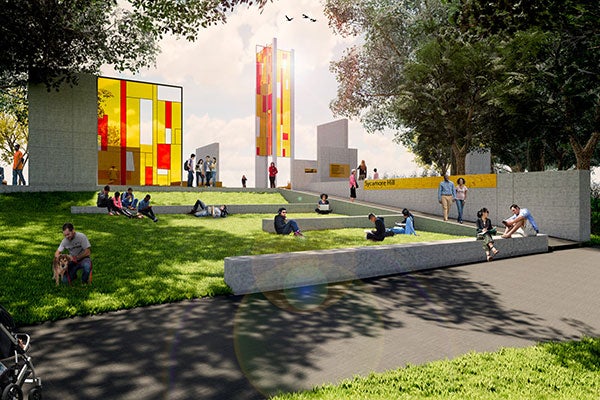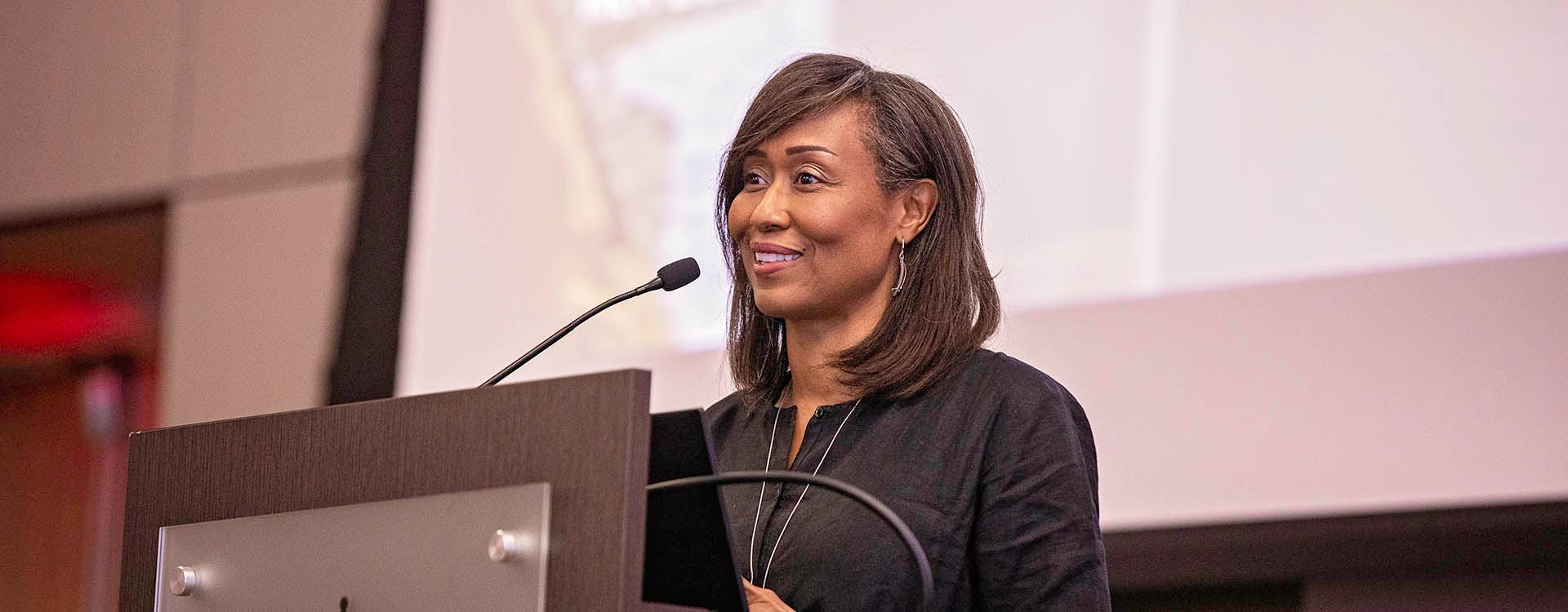Designing with history
Zena Howard: Urban remembrance and healing through design
Architect Zena Howard is known for leading projects such as the Smithsonian’s National Museum of African American History and Culture in Washington, D.C. and Atlanta’s Center for Civil and Human Rights. But she doesn’t design buildings.
She designs places and spaces that restore connections and share memories. “This is cultural practice, which I’ve been part of for the past 16 years,” Howard told her audience at East Carolina University’s on Oct. 10. “It’s architecture and design to address historical ills.”
According to Howard, the goals of cultural practice include collecting, sharing and preserving history; embracing cultural identity; strengthening connections between people; fostering memorable experiences; leveraging cultural assets; and nurturing knowledge creation.
Community engagement is an essential part of the process. “This is partnering with communities to design, which is revolutionary to an architect. From the beginning of our training, design has an element of ego; it’s hard to bring other people in. But what we’ve found, every single time, is that the design gets better.”
Her design approach now includes deep collaboration. “You can’t make change from just one perspective. I work with community members, with politicians, artists, anthropologists and historians.

Renderings of the Sycamore Hill Gateway Plaza, Greenville Town Common (Courtesy of Perkins and Will)
“What does it all mean? I spend the bulk of my career working on what are called iconic catalysts. They catalyze thought, behavior and action. They inspire people,” she said.
One of those catalysts is the Sycamore Hill Gateway Plaza at Greenville’s Town Common.
“With the Town Common, we started with the history, with research. The Sycamore Hill Missionary Baptist Church was the anchor of the community. We knew that as the area was redeveloped that we needed to honor it, to honor the corner where the church once stood,” she explained.
“In talking with members of the community during our research, we found several themes. Community first. There was pride and investment in each other. Spirituality —a sense of healing, refuge, baptism. History and memory. And music, and the freedom that exists within the musical structure. We wanted to recreate the spirit, the joy, the welcome of this community, this place. We wanted to bring back the feeling of sanctuary.”
Howard used the original plan of the church and elements including stained glass to evoke its memory. The glass is in the pattern of the neighborhood’s historic land lots. A tower serves as a reminder of the church that was once there. Benches evoke church pews. The plaza’s walls, seating and groundwork include elements that tell the story of the Sycamore Hill community and honor the 22 founders of the church.
Howard also shared examples of projects underway across the country and beyond, including Brooklyn Village in Charlotte’s Second Ward, Miami’s Historic Overtown, Destination Crenshaw in Los Angeles and Vancouver’s Hogan’s Alley.
All of the projects include community programming plans. “We know that you can’t rely on the idea of ‘If you build it, they will come.’ Programming has to be there from the beginning. Crenshaw has launched an aggressive economic empowerment program for small businesses. Miami has done something similar,” Howard said. “And we know that rents increase when development happens — by an average of 60%. You have to put protections in place. Gentrification is going to happen, but you want to prevent the mass gentrification that causes displacement or cultural erasure. You want people to come in and contribute to the culture, not to impose another.
“You can’t do everything with design,” she said. “But all projects, all of them, are opportunities to mend physical or social rifts. Creating and preserving identity in community-oriented design is fundamental to making great spaces, sites and cities accessible to all.”
